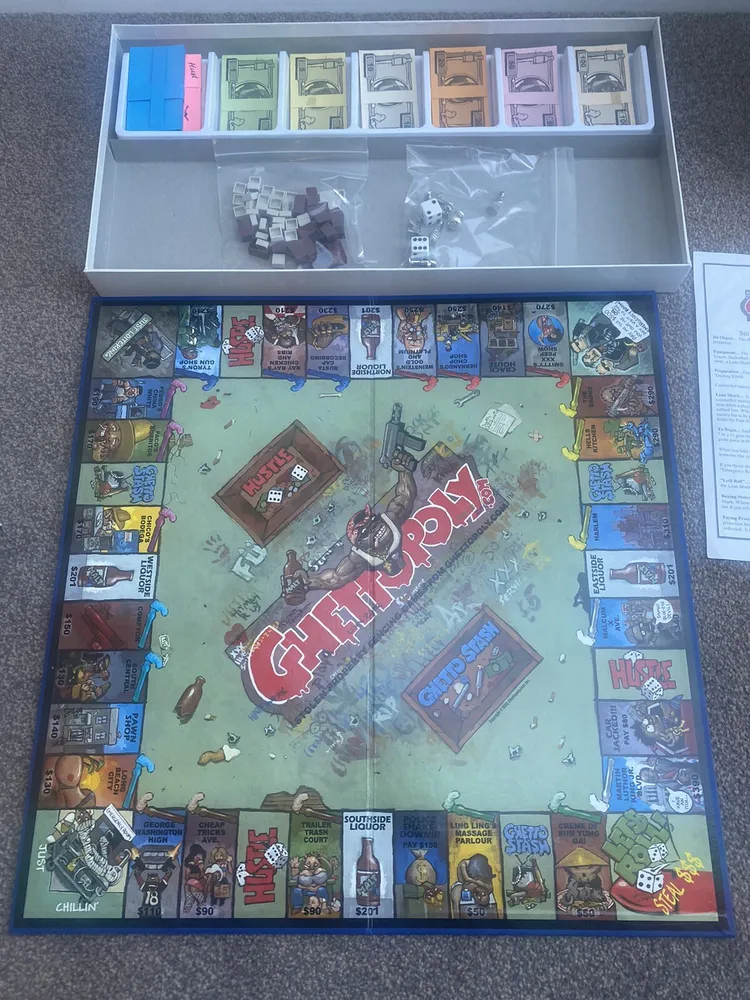Ghettopoly (2003)
Ghettopoly
Ghettopoly is a board game that was invented by David Chang, a Taiwanese American, and released in 2003. It is a parody of the board game Monopoly and uses Monopoly-like mechanics but is themed around a caricature of a black ghetto in the United States.
Why is Ghettopoly Popular?
The game gained notoriety due to its controversial content and has been criticized for perpetuating negative stereotypes of black people. However, some argue that the game is significant because it provides a commentary on the social and economic issues faced by people living in impoverished urban areas.
Game Components of Ghettopoly
How To Setup Ghettopoly
Setting up Ghettopoly takes about 5–15 minutes. Players start by placing the game board in the middle of the playing area, distributing the game pieces, and shuffling the Ghetto Stash and Hustle cards. Each player selects a game piece and places it on the “Go” square. The counterfeit money is distributed equally among the players. The loan shark tray and pink slip cards are placed within reach of all players.
Gameplay Mechanics and Game Objective
Player Experience
Playing Ghettopoly is an intense and controversial experience. The game is designed to be “extreme and eye-catching,” drawing heavily on stereotypes of urban life. Players engage in activities like buying stolen properties, building crack houses, and paying protection fees, which can be both provocative and offensive to some.
Pros
Cons
Personal Thoughts on Ghettopoly
Ghettopoly is not for everyone, especially those sensitive to racial stereotypes and offensive content. It is designed for players who can appreciate its provocative humor and are willing to engage with its controversial theme. However, it is crucial to acknowledge the significant backlash the game received from various communities, highlighting the fine line between humor and offense. If you’re looking for a game that pushes boundaries and sparks conversation, Ghettopoly might be worth considering, but it’s essential to be aware of its potential impact.
We are supported by our audience. When you purchase through links on our site, we may earn an affiliate commission, at no extra cost for you. Learn more.

